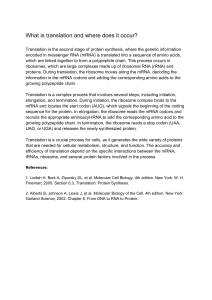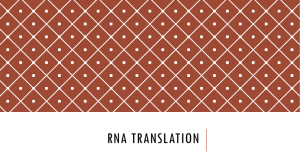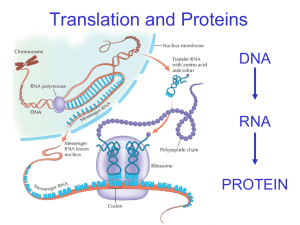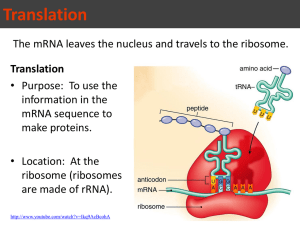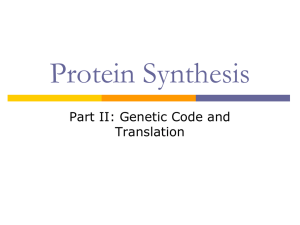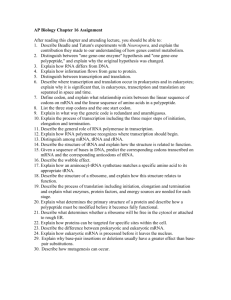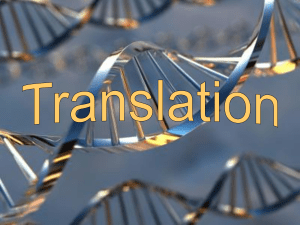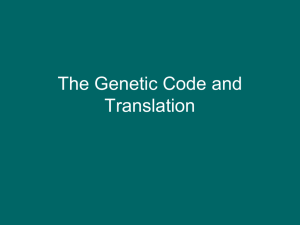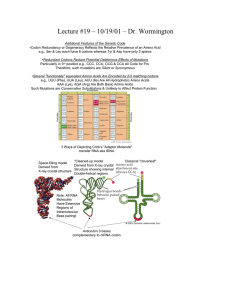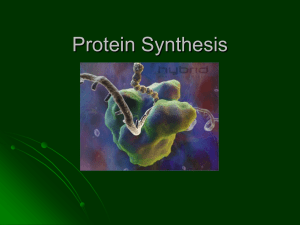Translation: a protein develops
advertisement
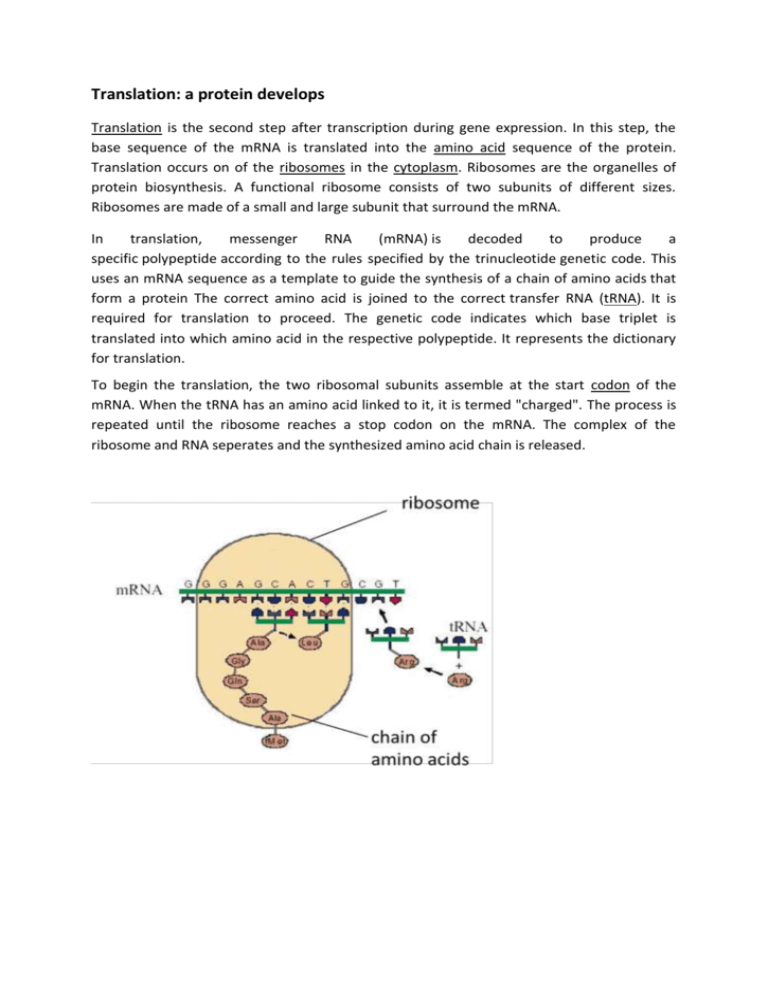
Translation: a protein develops Translation is the second step after transcription during gene expression. In this step, the base sequence of the mRNA is translated into the amino acid sequence of the protein. Translation occurs on of the ribosomes in the cytoplasm. Ribosomes are the organelles of protein biosynthesis. A functional ribosome consists of two subunits of different sizes. Ribosomes are made of a small and large subunit that surround the mRNA. In translation, messenger RNA (mRNA) is decoded to produce a specific polypeptide according to the rules specified by the trinucleotide genetic code. This uses an mRNA sequence as a template to guide the synthesis of a chain of amino acids that form a protein The correct amino acid is joined to the correct transfer RNA (tRNA). It is required for translation to proceed. The genetic code indicates which base triplet is translated into which amino acid in the respective polypeptide. It represents the dictionary for translation. To begin the translation, the two ribosomal subunits assemble at the start codon of the mRNA. When the tRNA has an amino acid linked to it, it is termed "charged". The process is repeated until the ribosome reaches a stop codon on the mRNA. The complex of the ribosome and RNA seperates and the synthesized amino acid chain is released.
